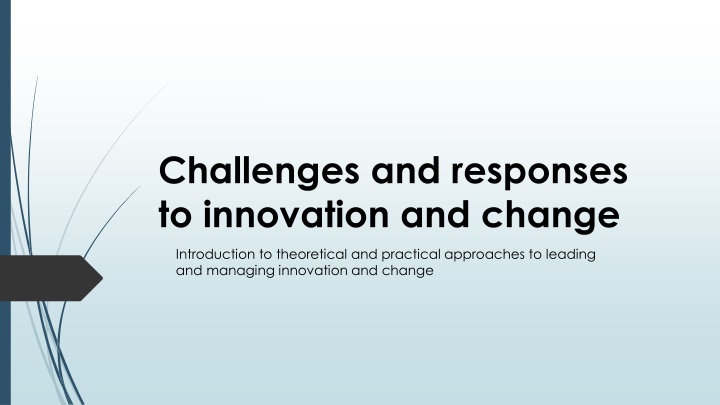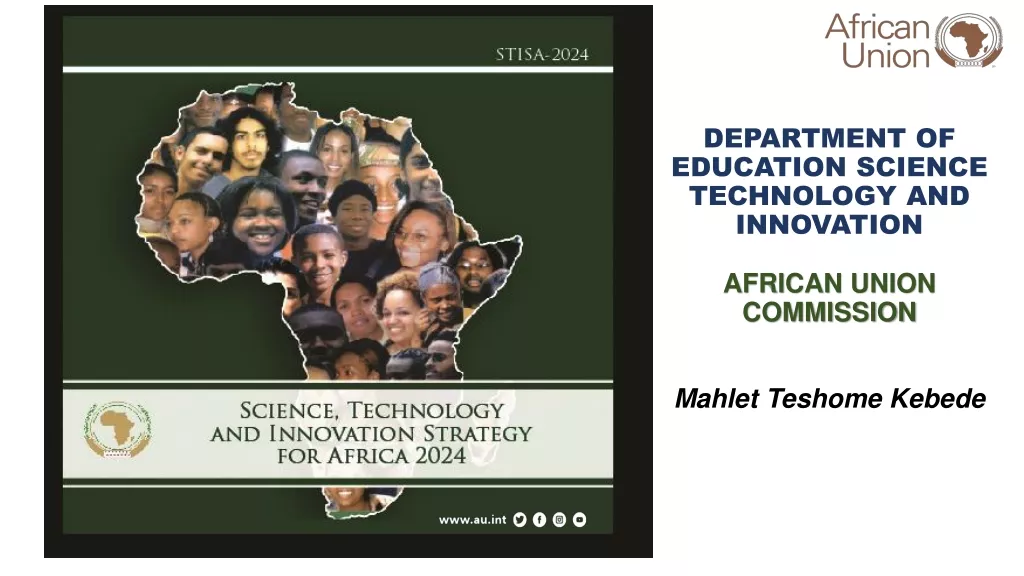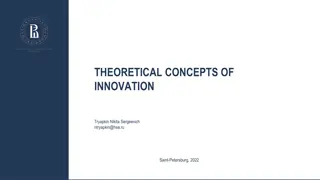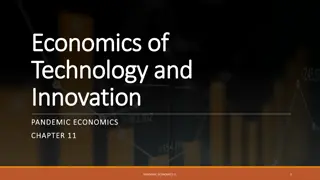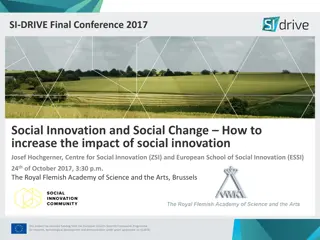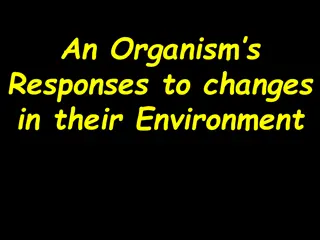Challenges and Responses to Innovation and Change in Leading Organizations
This case study examines the impact of decommissioning an innovative hospital discharge service by Age UK and the implications on individuals, staff, and Welsh Government policies. It highlights resource constraints, stakeholder involvement, and the broader context of funding in influencing service delivery.
Download Presentation

Please find below an Image/Link to download the presentation.
The content on the website is provided AS IS for your information and personal use only. It may not be sold, licensed, or shared on other websites without obtaining consent from the author.If you encounter any issues during the download, it is possible that the publisher has removed the file from their server.
You are allowed to download the files provided on this website for personal or commercial use, subject to the condition that they are used lawfully. All files are the property of their respective owners.
The content on the website is provided AS IS for your information and personal use only. It may not be sold, licensed, or shared on other websites without obtaining consent from the author.
E N D
Presentation Transcript
Challenges and responses to innovation and change Introduction to theoretical and practical approaches to leading and managing innovation and change
Case Study Look at the following Age UK (previously Age Concern and Help the Aged) information: Hospital discharge service (Age Cymru Gwent, 2017) website page: https://www.ageuk.org.uk/cymru/gwent/our-services1/hospital-discharge-service/ Age UK briefing discharging older people from hospitals (Age UK, 2016) which provides some background to Age UK s hospital discharge services. This is considered to be an innovative response to reducing prolonged stays in hospital and enabling individuals to return home with appropriate levels of care and support. Factsheet 37. Hospital discharge (Age UK, 2017). Read the Draft Savings Proposals 2018/19 document produced by Caerphilly County Borough Council: Turn to page 1 of Caerphilly County Borough Council s document and savings proposed for Social Services, Public Protection and Corporate Policy. Look at the first proposed saving of 46,000 to decommission (withdraw or cease) an Age Concern Hospital Discharge contract. The local authority s reason for their proposal is: Decommissioning of contract for relatively low numbers of people receiving low-level, non-statutory services for a short period. Forms part of a Wales-wide push to promote greater independence . Having read through the information from the local authority and Age UK, if Age UK s hospital service is decommissioned, what might the likely impact be on: The time that individuals spend in hospital as well as other implications for individuals, families, carers and representatives in terms of their choices, feeling in control and physical and mental health and wellbeing? The availability of beds and care for individuals needing to go into hospital? Hospital staff and social workers ability to fulfil their responsibilities as they currently refer individuals to Age UK s hospital discharge service? Social care staff when individuals eventually reach home, having experienced a delayed transfer of care and support? Staff members of Age UK who are employed to deliver the hospital discharge service? The principles of the Social Services and Wellbeing (Wales) Act which promotes collaboration between the third (voluntary) sector (Age UK) and statutory sector (NHS and local authority Social Services) to collaborate to promote individuals wellbeing outcomes including appropriate levels of independence with care and support? Does this case study resonate (echo) with an experience in your organisation, i.e. have you wanted to deliver a service in a particular (perhaps innovative or different) way but been constrained by resource and time constraints? Can you recall how this made you feel? This case study has highlighted challenges to innovation as regards resource constraints as well as the far reaching consequences for individuals, staff members and the intentions of Welsh Government policy. The case study shows that what happens at national level (Welsh Government funding) influences what happens at local authority level (local authority funding for organisations operating in the region) which subsequently impacts on individuals accessing and using those organisations services as well as other stakeholders (families, carers, representatives, staff members and wider community members). It demonstrates that there are no easy answers to addressing challenges to innovation because of the broader context of Welsh Government funding as well as separate social care (local authority) and health (NHS) budgets.
The case study highlighted the need to prioritise resources owing to: - A need to include key stakeholders including individuals who access and use services in the decision making process about saving money - Increased demand for social care and health services including an increased older population - Finite (limited) resources - Diverse population needs which vary according to the local population profile - Practical reasons - Ethical reasons - Discussions about what is wanted versus what is needed
Some of the challenges facing decision makers in setting priorities include: - Competing demands for resources within any given population - Decision making processes and whether they are considered to be accountable and transparent - Engagement with citizens in a meaningful way - Evidence, deliberation and dialogue - Leadership and management of the process Robinson et al. 2011
Accountability for Reasonableness (A4R) is an example of an approach to decision making and setting priorities (although health related, you can consider this within the context of the case study and other cases of priority setting): - The healthcare priority setting is fully transparent - Decisions are based on conditions that can be considered to be relevant to the majority of the population - Decisions are subject to revision in the light of new evidence - There is a right of appeal against decisions made - Each of the criteria used for decision making is monitored and enforceable (Daniels and Sabin, 2008 quoted in Smith et al. 2015)
In the case study, if Age UKs hospital discharge is decommissioned Age UK s leadership and management may respond to this change in a number of ways, for example: - Staffing re-structure including re-skilling, re-deployment and potential job losses - Re-location of a service or services - Change in service delivery including the reduction or closure of a service or services - Development of new services - Securing finance from an alternative source or sources and continuation of the service in its current or altered form
This is likely to be a challenging time for the organisation where some staff may resist change and there may be conflict We will now outline some theories on resistance to change, followed by signposting to social care and health resources that provide a range of approaches to managing innovation and change We will consider observations made by an author called Burnes (2015) who wrote an academic journal article called Understanding resistance to change -building on Coch and French , Journal of Change Management, 15 (2) pp.92-116 and apply them to the case study of Age UK
Burnes, B. (2015) Understanding resistance to change - building on Coch and French , Journal of Change Management, 15 (2) pp.92-116. Burnes (2015) argues that previous theorists thinking relates resistance to innovation and change to: - Individuals personalities and responses - Organisations leadership and management of change
Burnes (2015) refers to four theories on resistance to change : 1. Cognitive dissonance theory (Festinger,1957) - Individuals in organisations try to be consistent in their attitude and behaviour; when they sense inconsistency between two or more attitudes or between their attitudes and behaviour they feel frustrated and uncomfortable with a situation - values, assumptions and practices it will meet with resistance from staff unless staff also change in accordance with the new vision If an organisation sets out on a change that is unfamiliar with previous
Cognitive dissonance theory (Festinger,1957) - likely to be resistance Where values, assumptions and practices align with staff there is less - where staff are aware of forces external to the organisation that force change, e.g. government funding However, this theory can be compromised in the face of deep crisis, e.g. If we apply this theory to Age UK and the potential decommissioning of its hospital discharge service in Caerphilly: If Age UK leadership and management change its services and staff feel that the changes are unfamiliar with previous values, assumptions and practices, they will resist the changes unless they can be convinced that the changes are appropriate and justified. Staff members awareness of external forces (in this instance, Caerphilly County Borough Council s withdrawal of 46,000 funding and decommissioning of the hospital discharge contract) may make them less resistant to the changes to services even if there is not full agreement with them.
2. Depth of Intervention Theory (Huse, 1980) -The greater the depth of intervention (i.e. the greater the depth of change) the more likely it is to impact on the psychological makeup and personality of the individual - The depth of the intervention should be managed by the level of participation by the individual if they are to accept changes If we apply this theory to Age UK and the potential decommissioning of its hospital discharge service: If leadership and management cannot secure alternative funding to fill the loss of 46,000 for its hospital discharge service, this is likely to result in a great depth of change, impacting on the psychological make up and personalities of individuals (staff members) in Age UK. Leadership and management need to manage the level of participation by individuals (i.e. ensure that staff members are consulted and participate in any consequential changes) if they are to accept changes.
3. Psychological Contract (Schein, 1988) -There are a set of unwritten expectations that exist between leadership, management and staff that go beyond pay and terms and conditions - These unwritten expectations include values such as feeling a sense of dignity and worth which form part of a psychological contract - It is argued that because of this psychological contract, staff need to see, understand and believe the justification for changes If we apply this theory to Age UK and the potential decommissioning of its hospital discharge service: Leadership and management must pay regard to the psychological contract between the organisation and staff (by recognising the dignity and worth of all affected) during its discussion with staff members about proposed changes and future innovations. Staff at Age UK need to see, understand and believe the justification for changes and future innovations.
4. Dispositional resistance (Oreg, 2003) -Individuals vary to the degree to which they are psychologically disposed to accept or resist change - Personality factors may include: - Emotional reaction to imposed change - Cognitive (thinking or reasoning) rigidity - Short-term focus - Routine seeking Oreg (2003) argues that despite personality, an individual s reaction to change can be moderated (weakened) by their relationship with leadership (the change agent) and how they manage the change process
4. Dispositional resistance (Oreg, 2003) If we apply this theory to Age UK and the potential decommissioning of its hospital discharge service: Despite personality types in Age UK, some of who may be psychologically prone to resist change, staff members resistance to change can be moderated (weakened) by their relationship with leadership and management and how they manage the change process. To summarise, the key messages from these theories are: Some personalities can be more resistant to innovation and change compared to others, who embrace and thrive on change, particularly when aligned with existing values, assumptions and practices. The leadership and management of innovation and change is critical; it is important to involve staff and other stakeholders so that they feel part of a change as opposed to inflicted by it.
We will now move on to an introduction to approaches and resources that may support you to overcome challenges identified in this theme
Approaches - Kotter (1996) presents an eight step change model as a guide to the leadership and management of change
Step 1: Create urgency Be clear about what the change is and why it needs to take place Step 2: Form a powerful coalition Obtain and retain permission to make the change, involving all affected by the change; identify people to guide the change (this should be a broad range of stakeholders including individuals accessing and using services)
Step 3: Create a vision for change Have a clear view of what you want to achieve and how it fits with your organisation s vision and values Step 4: Communicate the vision Ensure that people know what the results of the change will look like; review individuals experiences and use storytelling
Step 5: Empower action Empower (give someone power or authority) to make the change happen; be aware of how the change will affect people and manage reactions Step 6: Create quick wins Recognise and celebrate the successes of the change, e.g. implementation, positive feedback from individuals, improved efficiency
Step 7: Build on the change Build on the change to ensure that it is fully implemented, including overcoming any obstacles and barriers (these may be seen and unforeseen) Step 8: Make it stick (institutionalise the change) Build this change into the organisation s culture (shared values and beliefs; French et al, 2011, p.339), policies and practices
Approaches - Five Whys can be used throughout a change process to understand and respond to the existing practice in an organisation and also, why a change programme has encountered barriers to its implementation (NHS, 2010;SCIE, 2010) Purpose By repeatedly asking the question why? (use five as a rule of thumb), you can peel away the layers of a problem to get to the root cause. The reason for a problem often leads to another question, so you may need to ask the question fewer or more than five times before you get to its origin. Five whys can also help you to determine the relationship between different root causes of a problem. It is easy to apply and to complete without statistical analysis. (NHS, 2010, p.48)
Five Whys (SCIE, No date) https://www.scie.org.uk/publications/elearning/organisational-change-in-social-care/resource/a-to- z/f.html?referral=https://www.scie.org.uk/publications/elearning/organisational-change-in-social- care/resource/index.html
Resources relating to the leadership and management of innovation and change Social Care Institute for Excellence has a range of approaches to managing innovation and change; A-Z of change approaches https://www.scie.org.uk/publications/elearning/organisational-change-in-social-care/resource/a-to- z/a.html?referral=https://www.scie.org.uk/publications/elearning/organisational-change-in-social- care/resource/index.html
NHS Institute for Innovation and Improvement (2010) The Handbook of Quality and Service Improvement Tools The introduction to this handbook states that it contains a collection of proven tools, theories and techniques to help NHS staff design and implement quality improvement projects that do not compromise on the quality and safety of patient care but rather enhance the patient experience. http://www.miltonkeynesccg.nhs.uk/resources /uploads/files/NHS%20III%20Handbook%20serv iceimprove.pdf
References Burnes, B. (2015) Understanding resistance to change building on Coch and French , Journal of Change Management, 15 (2) pp.92-116. Taylor and Francis Group [Online]. Available at: https://www.ebsco.com/ (Accessed: 3 January 2018). French, R., Rayner, C., Rees, G. and Rumbles, S. (2011) Organizational behaviour. 2nd edn. Hoboken, N.J.:John Wiley and Sons, Ltd. Kotter, J. (1996) Leading change. Boston, Mass: Harvard Business School Press. NHS Institute for Innovation and Improvement (2010) The handbook of quality and service improvement tools. Available at: http://www.miltonkeynesccg.nhs.uk/resources/uploads/files/NHS%20III%20Handbook%20serviceimprove.pdf (Accessed: 3 January 2018). Robinson, S., Dickinson, H. , Williams, I., Freeman, T., Rumbold, B. and Spence, K. (2011) The Nuffield Trust Setting priorities in health. Available at: https://www.nuffieldtrust.org.uk/files/2017-01/setting-priorities-in-health-research-report-web-final.pdf (Accessed: 3 January 2018). Smith, A., Donovan, J. and Coast, J. (2015) How clinical rationing works in practice: a case study of morbid obesity surgery , Social Science and Medicine, 147, p.288-295 [Online]. Available at: http://www.sciencedirect.com/ (Accessed: 3 January 2018). Social Care Institute for Excellence (2015) Organisational change in social care: A-Z of change approaches. Available at: https://www.scie.org.uk/publications/elearning/organisational-change-in-social-care/resource/a-to- z/a.html?referral=https://www.scie.org.uk/publications/elearning/organisational-change-in-social-care/resource/index.html (Accessed: 3 January 2018).
